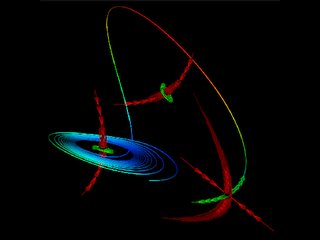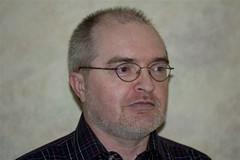
“By visualizing the immune system actively attacking the cancerous growth, the immune system is mobilized, strengthened, and its natural antagonism toward cancerous growth is reawakened. In this way, the person participates in his or her own treatment, a kind of psychic biofeedback which increases the will to live.” – from Psychotherapeutic Treatment of Cancer and the Consciousness Restructuring Process, 2000.
I find myself somewhat trapped. If, as seems to be the case with my meandering thoughts, my mind can influence the future of the body, then the corollary appears to be that in the past my mind was already influential in the development of cancer. Not a comforting thought!
But maybe that is the price that must be paid to embrace the possibility of contributing to one’s own healing. After all, conventional treatment hardly ever talks about visualization and meditation, and when it does, it does so in the context of adjusting to one’s predicament. This is most obvious in the hospice setting where the focus for visualization and meditation exercise is on dying with dignity. The attitude seems to be that being at peace emotionally can’t hurt the situation. But implying that a patient may somehow have been a participant in the onset of cancer one might do more harm than could possibly be warranted by quickly issuing the corollary that this means the patient can contribute to his/her own healing. Far easier to simply recommend practices to ease pain and be at peace than to go out on a limb and suggest self-healing has true potency.
Bernie Siegel is one conventional practitioner, a surgeon, whose books demonstrate his willingness to risk the implication of self-blame. He does so because of his conviction that self-healing occurs regularly with what he calls his ECaPs (Exceptional Cancer Patients). Love, Medicine & Miracles and Peace, Love & Healing are two of his books in my library that I intend to re-read right away. Another book which I’ll digest shortly afterwards will be Suzette Haden Elgin’s Staying Well With The Gentle Art of Verbal Self-Defense; she recommends Siegel’s books enthusiastically. Whereas Siegel uses drawings and images as primary tools for self-healing, Elgin uses metaphors and verbal constructs for self-protection and self-healing.
Siegel makes a comment in the introduction to Peace, Love & Healing which helps alleviate the self-blame implicit in recognizing that our thoughts, emotions, and attitudes may have predisposed us to cancer in the first place. In fact, his view is that whatever the truth of that proposition, it is something simply not useful to pursue - something akin to Martin Seligman’s recommendations about arguing with oneself by considering the usefulness of a proposition.
“However, those of you who feel guilt because you believe you have caused your own illnesses, or who feel like failures if you cannot cure them, are giving your healing system a destructive message. You must let go of feelings of guilt and failure so that, unencumbered by these negative messages, you can utilize to the fullest your innate healing capacities.” – p.4
I guess this implies that we need to let go of the past simply because we can’t do anything about it anyway; but the future is something we can influence with the power of imagery, metaphor, and optimism.

No comments:
Post a Comment